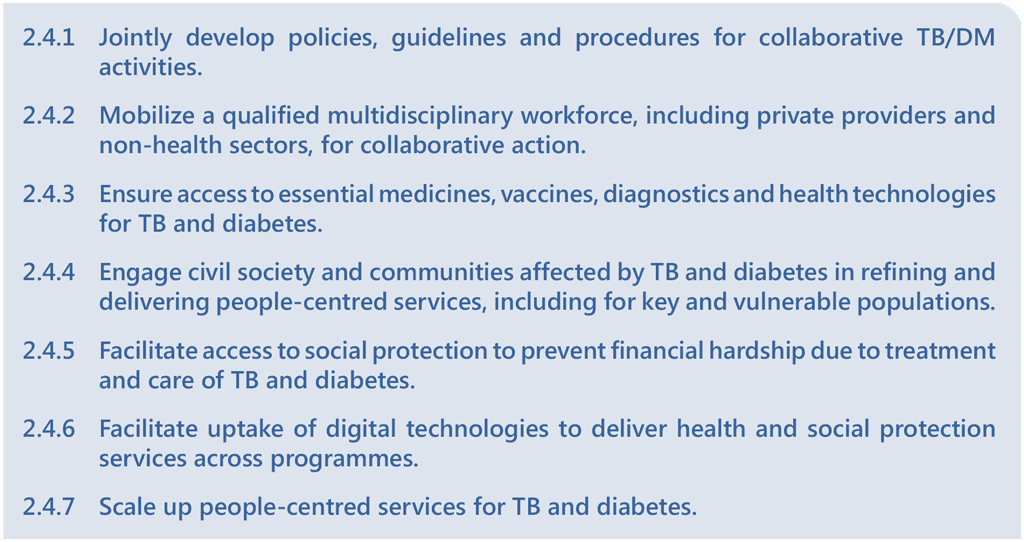3.3 TB treatment among people living with diabetes

3.3.1 TB treatment regimens
 TB KaSPar
TB KaSPar
 Feedback
Feedback

3.3.1 TB treatment regimens
If an individual with diabetes is found to have a positive TB screening result, they should receive a confirmatory diagnostic test as soon as possible. Studies suggest an association between diabetes and MDR-TB (109), and, given the increased risk of mortality in this population, it is critical that the correct TB treatment regimen be provided as early as possible once TB is diagnosed. Therefore, drug susceptibility testing is also important, in addition to establishing the diagnosis of TB disease.
3.2.1 How to diagnose TB

3.1.1 Whom to screen for TB
Screening and early diagnosis of TB among people who are at higher risk of developing TB is an important strategy for early identification of TB, for reducing morbidity and mortality due to TB and for preventing TB transmission. Systematic reviews have found that people living with diabetes are at higher risk of developing TB than people without diabetes, although people with glycaemic control are at lower risk than those with uncontrolled diabetes (2,94,95).
2.5.1 Adopt indicators and set targets for collaborative TB/DM activities.

2.4.1 Jointly develop policies, guidelines and procedures for collaborative TB/DM activities.
To implement and scale up people-centred services for TB and diabetes, programmes should jointly develop policies, guidelines and tools for collaborative action and mainstream collaborative TB/DM activities within national guidelines and SOPs.

2.3.1 Identify priority comorbidities and interventions.

2.2.1 Assess the joint burden of TB and diabetes.

2.1.1 Strengthen political commitment, coordination and accountability for collaborative action on TB and diabetes.
To support countries in introducing and scaling up collaborative action on TB and comorbidities, including diabetes, WHO has developed the Framework for collaborative action on TB and comorbidities (referred to hereinafter as “the Framework”) (35). The Framework covers five areas that are central to delivering people-centred care for TB and comorbidities: (A) Strengthen governance and accountability for collaborative action; (B) Conduct an analysis of access to quality services for TB and comorbidities; (C) Coordinate planning and resource mobilization for collaborative ac